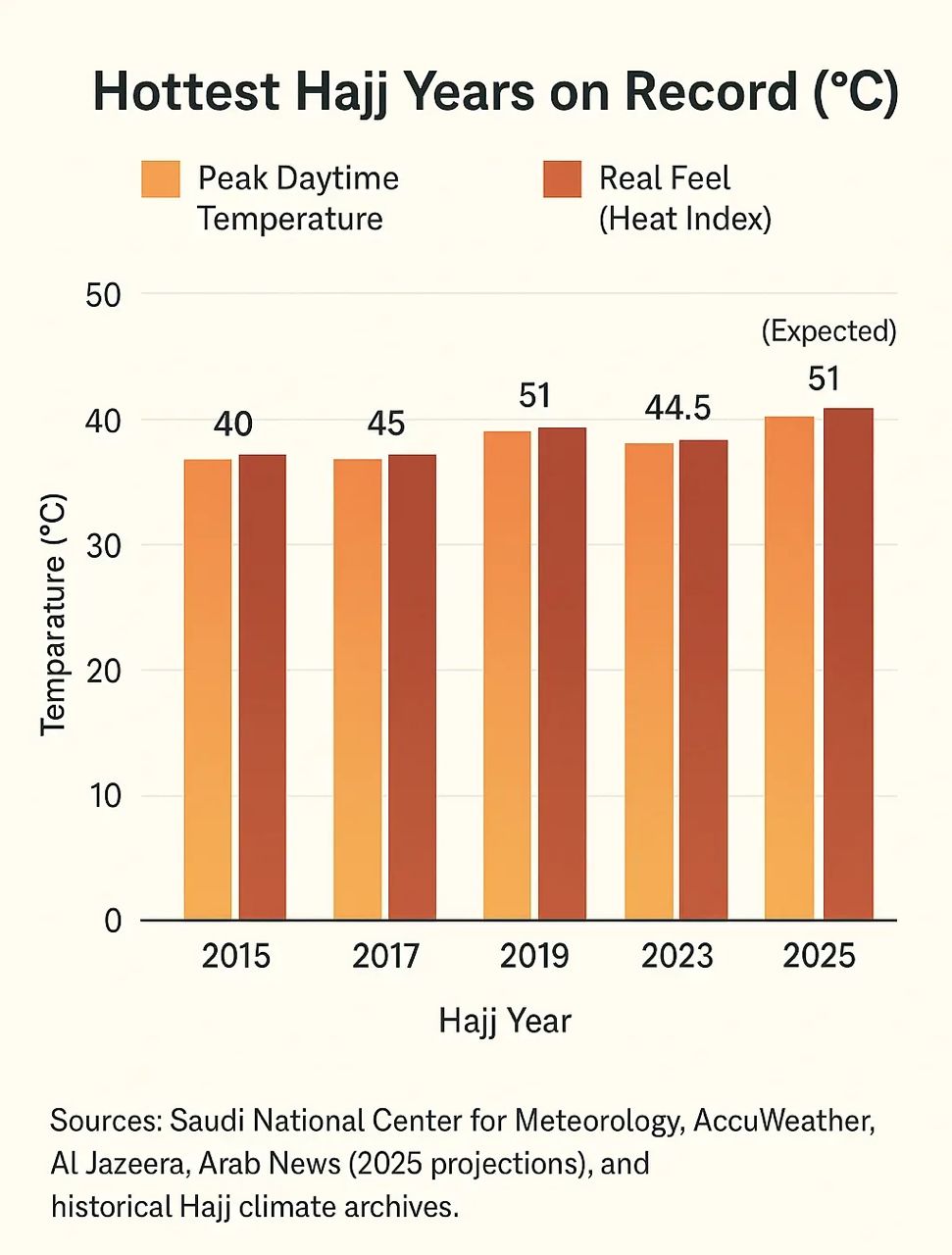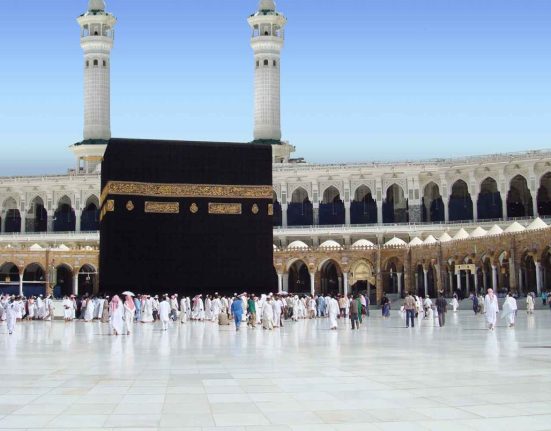As millions of Muslims prepare for the annual Hajj pilgrimage this June, meteorologists are raising serious alarms about the harsh weather conditions forecasted for this year’s spiritual journey. Experts warn that Hajj 2025 could go down in history as one of the hottest ever recorded, with real-feel temperatures projected to exceed a sweltering 50 degrees Celsius in the holy cities of Saudi Arabia.
The pilgrimage, which follows the Islamic lunar calendar, rotates through the Gregorian calendar year after year. This year, the Hajj will fall in early June squarely in the peak of the Arabian Peninsula’s summer heat. As a result, pilgrims embarking on the sacred rites in Makkah, Mina, Arafat, and Muzdalifah between June 3rd and 9th should brace themselves for conditions that health authorities have described as potentially life threatening.
Forecasts released by climate analysts predict daytime highs in Makkah and Mina hovering around 41 to 42 degrees Celsius, with the heat index also known as the “real feel” temperature soaring between 47 and 50 degrees. The critical gathering at Mount Arafat, the spiritual climax of the Hajj, will take place on June 5 under the most punishing heat, with forecasts showing highs of 43 degrees and a real feel that could reach a searing 51 degrees. That same night in Muzdalifah, pilgrims are expected to rest outdoors under temperatures remaining near 42 degrees, with humidity and wind patterns pushing the heat index further upwards.
Saudi authorities, fully aware of the extreme climate challenge, have rolled out an extensive plan to safeguard the health of pilgrims. The Ministry of Hajj and Umrah, in coordination with health services, has deployed mobile cooling systems and mist spraying fans throughout the key ritual sites. Thousands of emergency responders, volunteers, and medical personnel will be stationed across the pilgrimage route to offer immediate care, particularly for those showing signs of heat exhaustion, heatstroke, or dehydration.
Pilgrims are being strongly urged to prepare adequately by hydrating frequently starting days before the rituals begin using protective gear like umbrellas and wide brimmed hats, and minimizing physical exertion during the blistering afternoon hours. Lightweight and breathable ihram garments are also recommended to help regulate body temperature Of equal importance, individuals are advised to monitor signs of heat related illnesses such as dizziness, fatigue, confusion, and nausea, and to extend a helping hand to elderly or medically vulnerable fellow worshippers.
This is not the first time high temperatures have posed grave risks during Hajj. Historical accounts show that in the 1980s, and more recently in 2015, hundreds of pilgrims lost their lives due to a dangerous mix of intense heat, human congestion, and insufficient access to cooling infrastructure. This year, with weather conditions threatening to exceed those precedents, vigilance and cooperation among pilgrims and authorities will be paramount.
With faith as their compass and endurance as their guide, pilgrims are preparing for an extraordinary journey not only spiritual in nature, but also one that may test the physical limits of the human body under some of the most extreme heat conditions ever recorded during Hajj.






